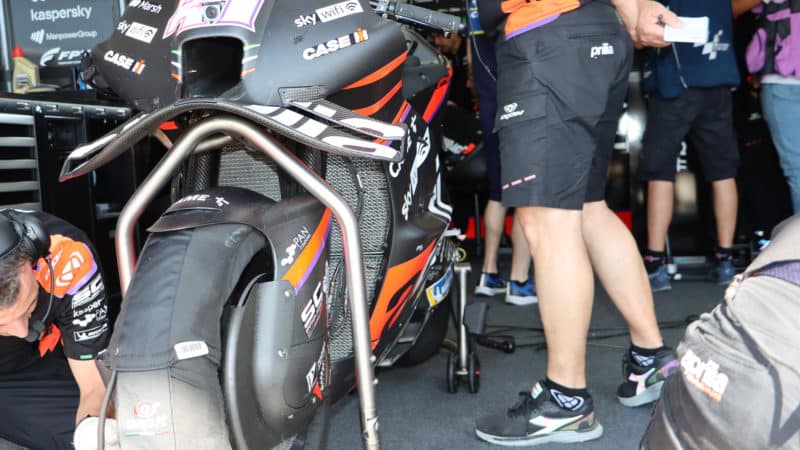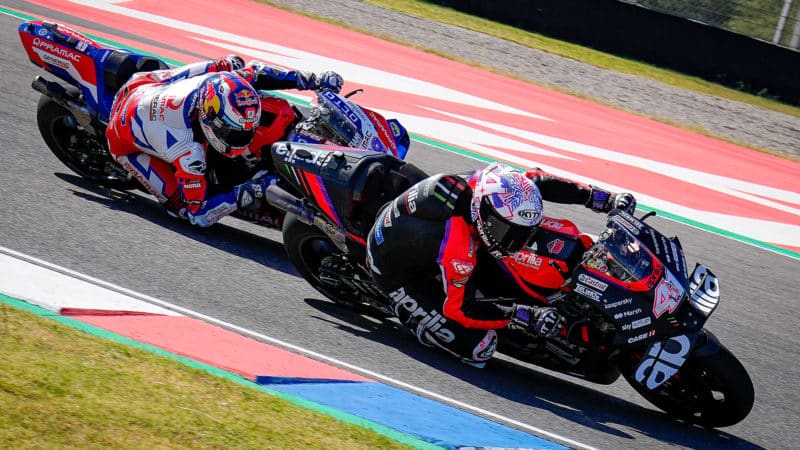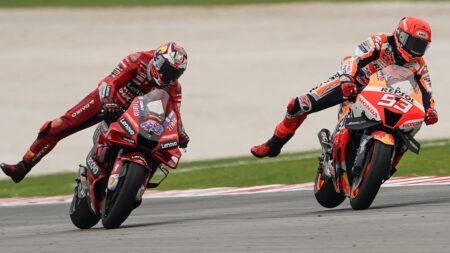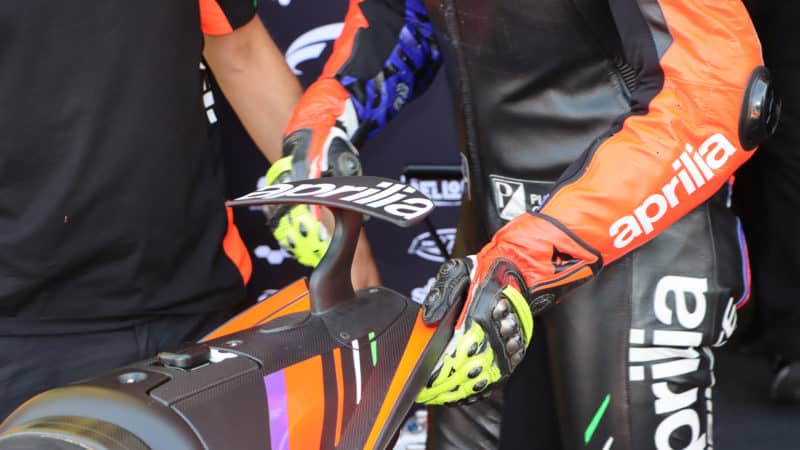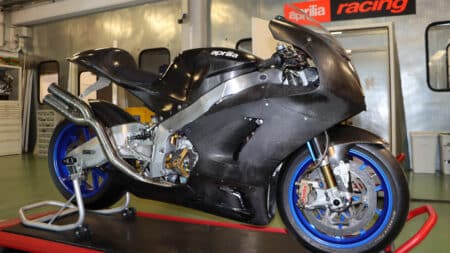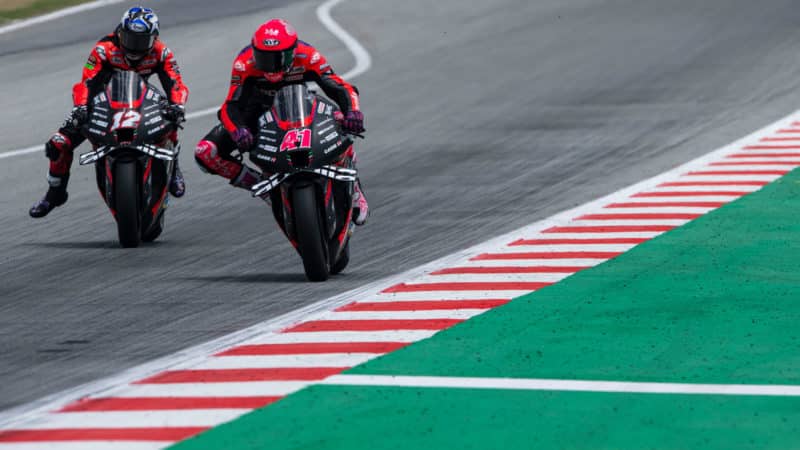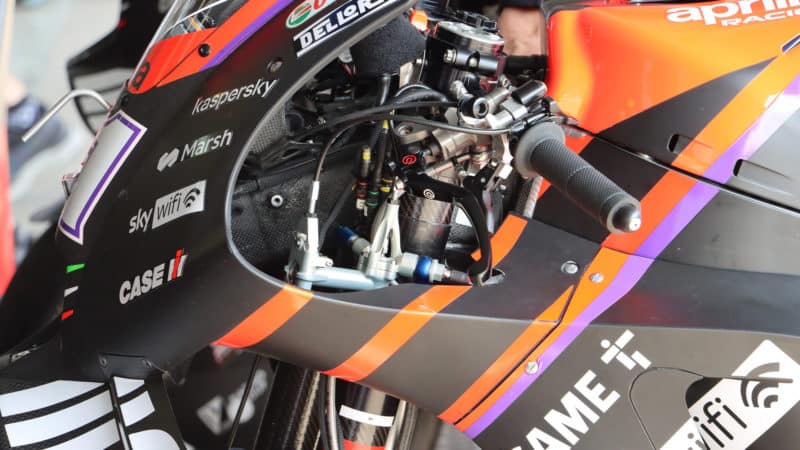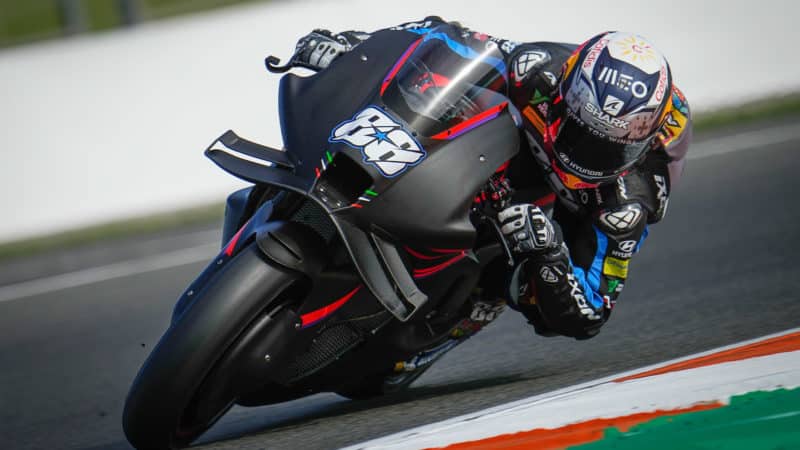“The first thing is to learn what happened during the last part of last season because during the first part of the season we were always strong, always on the podium,” the 33-year-old told me last November. “But the last part of the season was a disaster and we still don’t fully understand what happened.
“The second thing is pure power. And the third is rear grip because we can’t load the rear enough to create grip during braking, so we are paying on the brakes because we can’t use the engine braking because the tyre isn’t pushing into the ground. It’s the same thing in acceleration – we don’t have grip.”
More power may come from Aprilia’s latest patent, for a mechanical variable valve timing system. Electronic and hydraulic adjustable VVT systems are banned in MotoGP, which is why Suzuki equipped its GSX-RR with mechanical VVT a few years ago. Aprilia’s new system is different, hence the patent.
Variable valve timing won’t necessarily offer more peak power, but it allows you to tune for more high-rpm power, without losing the gentle, mid-range power that’s so important in motorcycle racing, for accelerating from the edge of the rear tyre. Essentially it’s the same idea as the adjustable exhaust valves and expansion chamber volume systems that appeared on two-stroke 500cc GP bikes in the early 1980s.
Aprilia’s growing strength in MotoGP was proved throughout 2022. Ducati may lead the way in downforce aerodynamics, but Aprilia was the first to use seat aero (to increase downforce on the rear tyre), during May’s Italian GP, with Ducati following suit at the British GP in August. Aprilia was also the first with a ground-effect fairing, introduced at Assen. Ducati tried a similar fairing during post-season tests at Valencia – and when Ducati copies you, it means you’re doing something right.
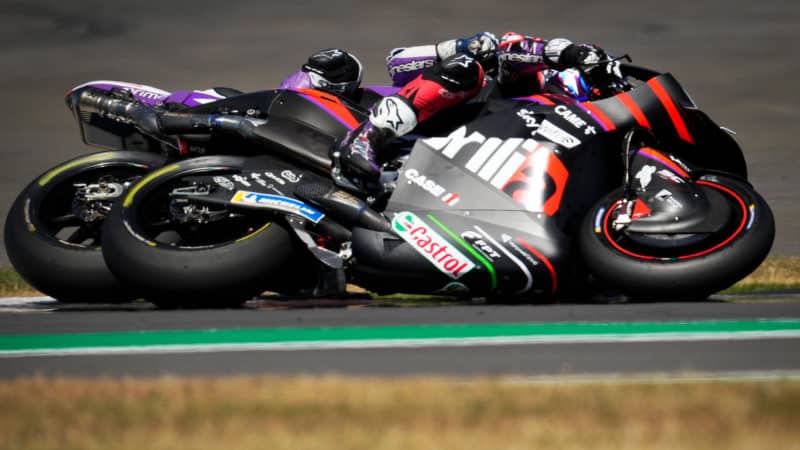
Viñales fights with Martin for his first Aprilia podium at Silverstone, where he finished second, just four tenths behind Bagnaia
Dorna
The final proof of the factory’s strength was RNF’s decision to quit Yamaha and lease RS-GP machines for its new riders Miguel Oliveira and Raúl Fernández. Oliveira was delighted with the bike during post-season tests and may pull some surprises.
At Valencia last September I sat down with Aprilia’s MotoGP technical director Romano Albesiano to ask him about the 2022 season and his hopes for 2023…
Mat Oxley: What were the positives and negatives of the RS-GP’s performance in 2022?
Albesiano: There wasn’t one big item we developed, so it’s been a general increase of performance, on the engine side, the chassis side, in the aerodynamics and in the way we work on track to optimise all the parameters, which is a vital factor. The weak point has been the consistency of performance, because we had a few races where the performance wasn’t aligned with the rest of the season, which was a surprise for us.
What was the reason for this?
The riders always say grip. This [the four consecutive flyaway races] was most the negative moment of the season and we don’t yet have a clear understanding of those few races where we had poor performance. The rest of the season was generally good.
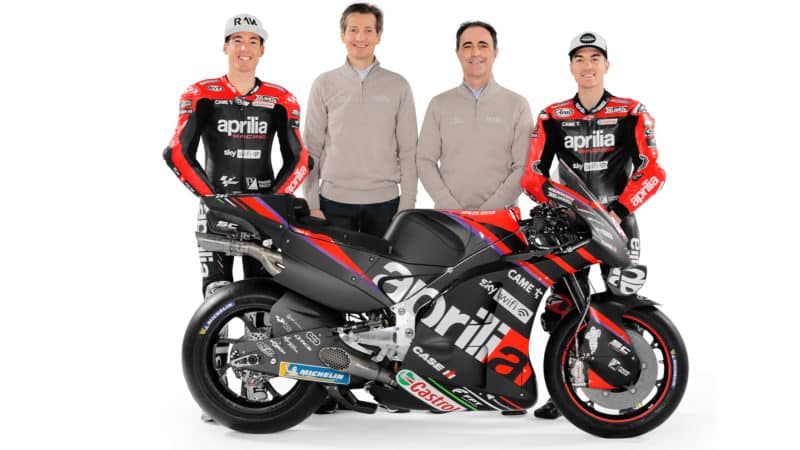
Team manager Rivola and technical director Albesiano with Espargaró and Viñales who are contracted to the end of 2024
Aprilia
What are your priorities for the 2023 bike?
The step forward we made with the 2022 engine helped a lot but we have to keep increasing performance, so for 2023 we expect an increase in engine performance.

